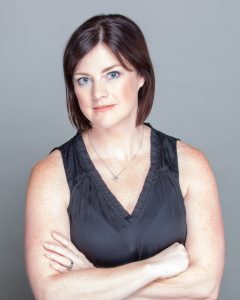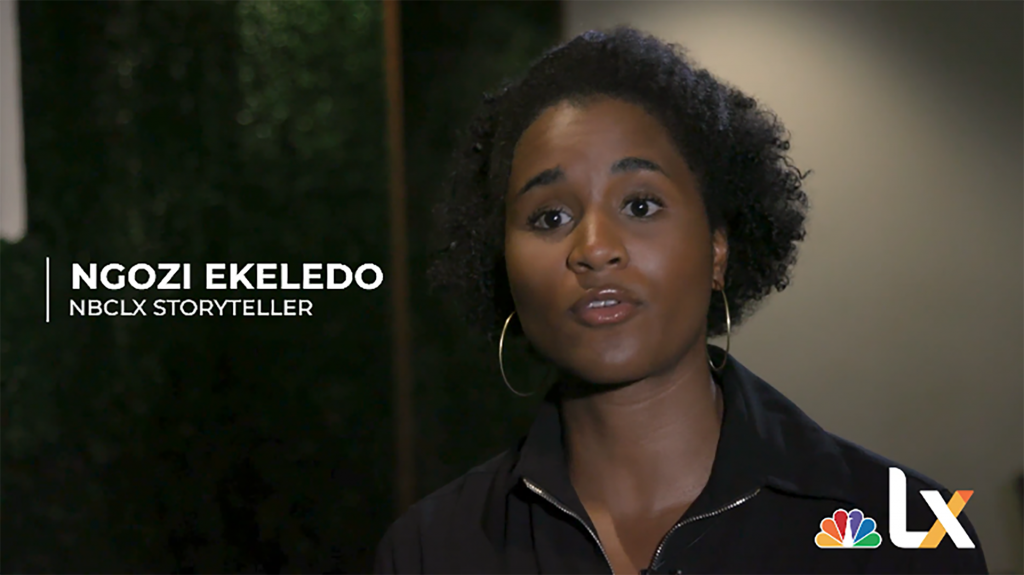
HELP WANTED: Are you a visually sophisticated TV journalist interested in creating enterprise video content for digital-native consumers across all platforms, eventually including a new linear channel? You’ll be supported by a large, deep-pocketed media company but free to do innovative work that’s personally important to you, unrestricted by conventional formulas, daily deadlines, or ratings pressure.
Okay, I made up that too-good-to-be-true job spec, but the job actually exists. It’s called Visual Storyteller, and the outfit looking for more of them is LX, the experiment in attracting younger viewers that the NBCUniversal TV station group introduced (and we wrote about) earlier this fall. It’s essentially open-source innovation — a work in progress for all the world to see on YouTube. For this second installment in our Knight-Cronkite News Lab series on innovations in storytelling — you can read our first report, about ABC’s Community Journalists, here — I went back to learn more about the Visual Storytellers and how they are trying to re-define video reporting.
“The biggest challenge right now is we’re trying to appeal to two very different audiences,” says LX News Director Meagan Harris. “The millennial and the younger-generation audience is really different from the traditional audience that’s been watching the news for a long time. So LX is an avenue where we can throw any rule out the window and innovate without the risk of losing our core [local TV] audience.”
To carry out that mission, Harris and her NBC colleagues have recruited four “extremely creative people” and told them: “Okay, the handcuffs are off. Let’s just go for it.” We got a chance to speak with three of them — all quite different from one another, but sharing common ground in their reasons for signing on to the new venture.

Clark Fouraker
Clark Fouraker spent more than a decade in local TV newsrooms, picking up a Master’s degree from Columbia Journalism School and a duPont for investigative reporting along the way. He was freelancing at WCBS-TV in New York when “I found full time work at this thing called LX, which was an exciting new opportunity to use the skills I had developed thus far and simultaneously break all the rules and see what happened.”

Fouraker and his colleagues use a variety of narrative techniques and state-of-the-art gear to enhance their reporting. The Visual Storytellers shoot and edit most of their stories themselves. Fouraker acquired a drone license, which he now puts to frequent use. “We have the luxury of not having a broadcast to fill,” Fouraker says. “And that has afforded a great and what I think will be a significant experiment in storytelling styles, figuring out what we like, and what our viewers and audiences respond to.”
Then there’s the element of time: the LX reporters get LOTS of it. Fouraker’s LX story on a smartphone app that helps the homeless runs 6:20. His package about a man who converts classic cars into electric models runs 7:37. (Fouraker created a television-friendly 2:13 cutdown of that one for his home-base station, KXAS in Dallas.)
Watch Clark Fouraker’s story “How Smartphone Technology is Helping the Homeless”
LX lives primarily as a YouTube channel for now, and Fouraker pores over his digital metrics for feedback on what’s working and what isn’t. “I’m definitely looking at what’s getting more traction and more social interactions than other stories,” he says. “I think everyone’s trying to figure out the secret sauce. And we’re all learning little bits and pieces.”
Ngozi Ekeledo
Ngozi Ekeledo was on a traditional path as a sports anchor and reporter for a couple of local stations and the Big Ten Network in Chicago, but she was freelancing and teaching at her alma mater, Northwestern, when LX came calling with a pitch that sounded a lot like her own media habits. “The stuff I’m watching is on YouTube, or it’s videos being shared on social media, Instagram, Twitter. And I love the style of it. The cinematography aspect of it is what really drew me to LX. I was like, ‘I’m ready to do things like this. This is why I got into journalism.’“

Now Ekeledo works out of NBC’s Boston station, specializing in stories about culture and identity. They range from explainers on the four-day work week and California’s new law allowing college athletes to monetize their celebrity to an examination of why there so few women of color in the emerging field of Blockchain to a recurring franchise on chefs called Main Course. Like Clark Fouraker, Ekeledo reports in a range of styles, sometimes staying behind the scenes. Main Course is a series of mini-documentaries told entirely in the words of its subjects, like the 10-minute-plus story of Boston restaurant entrepreneur Irene Li. “You don’t need to see me eating a dumpling to understand that these were her grandmother’s recipes. It’s so much more powerful hearing that from her.”
Watch Ngozi Ekeledo’s story “Fighting Stereotypes With Food”
“LX was kind of a risk,” Ekeledo says. “It was sort of a bet on myself. I don’t want to sound greater than I am or anything like that. But it was sort of like ‘Okay, these are the things I actually want to do. What happens if I just try it?’”
Chase Cain
Chase Cain worked in local TV news for 11 years in places like San Diego and L.A. before leaving for a stint creating digital videos for Hulu. He liked producing content for digital natives, but he started to miss journalism. So now he’s LX’s man in Los Angeles, with interests that include the environment and politics but go much farther. In his promotional video, Cain calls LX “one of those once-in-a-lifetime opportunities.”

Cain’s stories include a 7:18 report on California’s iconic and threatened Joshua Trees, an almost-11-minute explainer on how the 2020 census risks marginalizing certain communities, and a more personal essay entitled “Coming Out Isn’t Always the Right Choice.” Cain is experimenting aggressively with 360-degree video, building on work like an Instagram story about this fall’s Getty Fire in Brentwood. “It’s truly enterprise journalism,” Cain says. “We don’t have an assignment desk to hand out stories. If you’re going to do a story, it’s because you came up with the story. And that’s really exciting.”
Watch Chase Cain’s 360-video report on the Getty Fire
Cain’s naturalistic style and the injection of his own perspective is in deliberate contrast to standard television news fare. “I think one of the things that has always made human storytelling so engaging is that it’s filtered through another human,” Cain says. “And I think when you get too formulaic, you lose a little bit of that human element of what makes us real.”
LX is not as Montessori News-ish as I”m making it sound. The Storytellers have a style guide and discuss the visual approach and the specific platform strategy for each story beforehand with the home office in Dallas. News Director Meagan Harris reaches for a metaphor from her roots in rural Texas, where her father restores old cars and converts them into “street rods.” “The engine isn’t changing, and the engine is journalism,” she says. “We’re going to change where the car goes, we’re going to change how the car moves, we’re going to change the paint on the body, we’re going to do all these other things, But the what runs the car isn’t changing. And that’s journalism.”
Harris has her own hands full figuring out how to convert this fluid experiment into a solid channel next year. She’s also looking for more Storytellers in Philadelphia, Washington, D.C,, and Chicago. The current freedom from ratings and deadlines and time constraints may be harder to sustain in a linear format, but for now, NBC seems determined to live up to project head Matt Goldberg’s description of LX as “the R & D arm of the owned stations division.”
“LX has the advantage of this very large and successful organization behind it,” says Clark Fouraker. “But that organization is getting the benefit of this research and development and what we’re learning.”
Ngozi Ekeledo counsels patience. “I think so many times, when you launch these things, people are like, ‘Oh my god, it has 12 views — okay, we need to pivot to something else. It didn’t work.’ [But] you didn’t give it time. It needs time.”
“If we’re not a little uncomfortable, then we’re not pushing ourselves hard enough,” says Meagan Harris. “Change is a little uncomfortable. And it should be — but that’s how you know you’re growing.”
Chase Cain is optimistic. “If we can create great content, high quality content and meet people in the place where they’re choosing to watch that content, then that’s a recipe for success.”